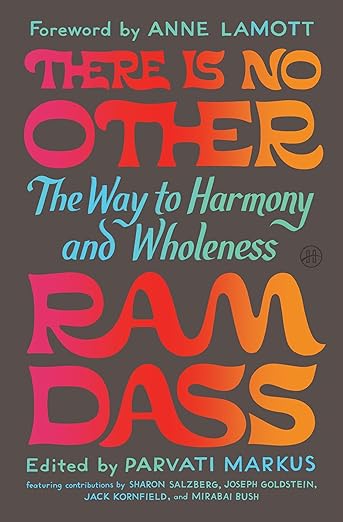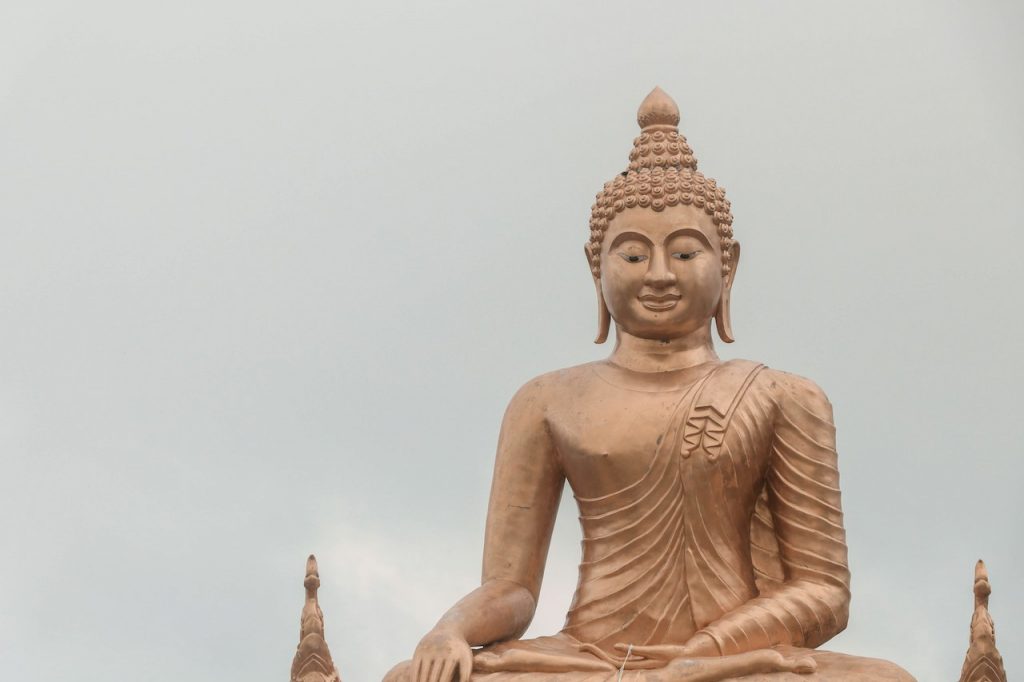When I was first in Buddhist monasteries in Thailand and Burma, I was taught three keys to the basic nature of life: everything is anicca, all is impermanent; everything is dukkha, which means “unsatisfactory”; and everything is anatta, which means “selfless,” empty like a dream. They are gateways to liberation. If you can see these qualities, you see with the eyes of wisdom.
Dukkha means all things are insecure and uncertain; sometimes this is translated as “suffering.” All we have to do is turn on the news to see our human struggles with continuing wars, climate change, pandemics, and the scourge of racism to see dukkha. Aging, sickness, and death are dukkha. Grasping, clinging, and fear are dukkha. These are all inevitable parts of human incarnation, folks.
So when the Buddha attained enlightenment under the Bodhi tree, he saw beings everywhere wanting to be happy, yet often doing the very things that made them unhappy. The great heart of compassion arose in him and tears rolled down his cheeks. Seeing the suffering of the world, he began to shine his compassion in every direction. Let me help beings be free so that they can live with peaceful and loving hearts amidst it all.
He explained that there are three kinds of dukkha. There’s anicca, which is the dukkha of change—the unstoppable cycles of joy and sorrow, praise and blame, gain and loss, pleasure and pain, fame and disrepute. We try to hold on to the pleasure and joy, but it doesn’t last. Of course, the good thing is that when things are terrible, they don’t last either. You can’t hold on.
The second kind of dukkha is the dukkha of physical and mental pain. We live in a culture that basically wants to sell you a prescription [or] a painkiller the moment you’re a little uncomfortable. Good luck. It doesn’t work that way. My friend, the surgeon general of the United States, said that more than half of what comes into the hospitals and clinics across America is really based on emotional pain and suffering. So this is the second kind of dukkha, physical and mental pain. You all know it because it’s part of incarnation. We all have it.
The third kind is called “samsara dukkha.” “Samsara” means the cycles of existence, the whole world of duality. Samsara dukkha is the nature of things. We have a globe and a world and a moon and a solar system and galaxies, all a play of duality; there’s light and dark, birth and death. There is unbearable beauty, amazing beauty, and an ocean of tears. Built into this human life are birth and death. Did you never see a man or a woman aged, bent down and walking with a cane, or sick and lying in bed? Did you never see a corpse after their life energy has passed from the body? Did the thought never happen to come to you, “Oh, this will happen to me too?”
How can you be so joyful? He said, “I am loving awareness. I love it all—the joy, the sorrow, the birth, the death, the spring, and the winter.”
When you really see anicca and dukkha deeply, this makes room for something new to be born. You begin to trust the process. The waves of life and the emotions come and there’s sadness and fear and gain and loss, and if you allow them all, letting them open in a spacious way, if you stay with it, it all passes and there you are, still the loving witness of it all. So anicca is the doorway to trust, and dukkha gives birth to compassion. Your grief becomes a doorway. They come together to make a courageous heart.
There’s a story of an old Hasidic rabbi who used to talk about the practice of prayer and meditation. He would say, “When you meditate, when you pray, when you offer your prayers, when you recite them, feel them and place them on your heart.” One day a student said, “Rabbi, why do you always use that strange phrase, ‘place them on your heart’? Shouldn’t we put them in our heart?” The rabbi got quiet and said, “It’s not us who can put them in the heart. Our practice is to recite them and place them on the heart so that someday, when the heart breaks, they will fall in.” This is how grief and dukkha become the doorway to compassion.
You see a hungry child, a painful injustice, an act of violence to an innocent person and your heart goes out. You want to help. The profound reality of suffering is an invitation to step out of the fiction of separateness, grasping at what is called the “small sense of self” or the “body of fear,” where we are frightened or selfish or self-centered or cut off. This is not who we are. We know there is a reality beyond this. We feel it walking in the high mountains or making love or being there at the mystery of the birth of a child or the death of a human being. All of a sudden we step out of time-bound consciousness, the separateness, and feel ourselves part of the turning of the seasons of life. You can feel it on retreat. You’re doing walking meditation and all of a sudden you realize you’re not doing it. It’s all just doing it itself. It’s amazing. One of my teachers explained this as “No self, no problem.” More self, more clinging; more self-centered, more problem.
Accepting dukkha, anicca, and anatta, you can live in a timeless present.
I loved watching Ram Dass in the last years of his life. He was there in that wheelchair in a broken body where he couldn’t move one arm and one leg, where he had aphasia and he couldn’t really speak fluently. He grappled to find words. He had multiple infections and physical traumas and bedsores at times. Yet he was about the happiest person I’d ever been with. Really joyful amidst all the paralysis and aphasia. How can you be so joyful? He said, “I am loving awareness. I love it all—the joy, the sorrow, the birth, the death, the spring, and the winter.”
So when you understand that this is our incarnation, there comes a beautiful sense of freedom. The heart changes when we come to terms with dukkha and say, “Yes, that’s part of incarnation.” Loss and change and pain and suffering and gain and pleasure all are woven together. It becomes an invitation to freedom. It is here always, a joy that comes when we see with the eyes of wisdom and the great heart of compassion and trust. We can let go and become the loving awareness that holds it all.
Oh, nobly born, remember this teaching for now and forever. Your joy, your peace, your acceptance, your flexibility, your nonrigidity, your openness, even with your own foibles, like I with mine, all of those things finally held in the great heart of compassion.
Teach yourself peace. Pass it on.
♦

Excerpted from “There Is No Other: The Way to Harmony and Wholeness” by Ram Dass and edited by Parvati Markus. Copyright © 2025 by Ram Dass. Excerpted with permission by HarperCollins.
Thank you for subscribing to Tricycle! As a nonprofit, we depend on readers like you to keep Buddhist teachings and practices widely available.
